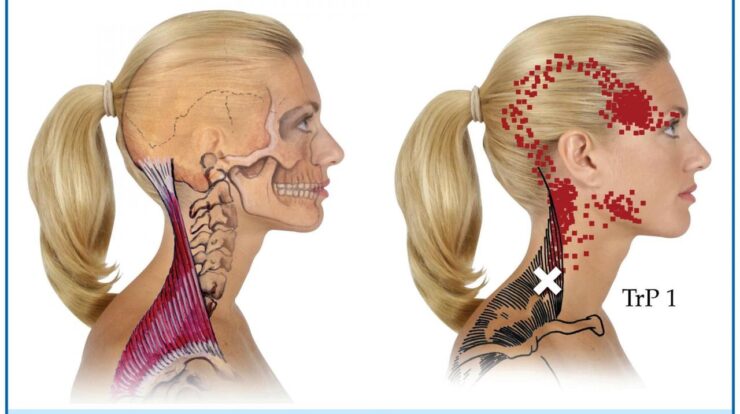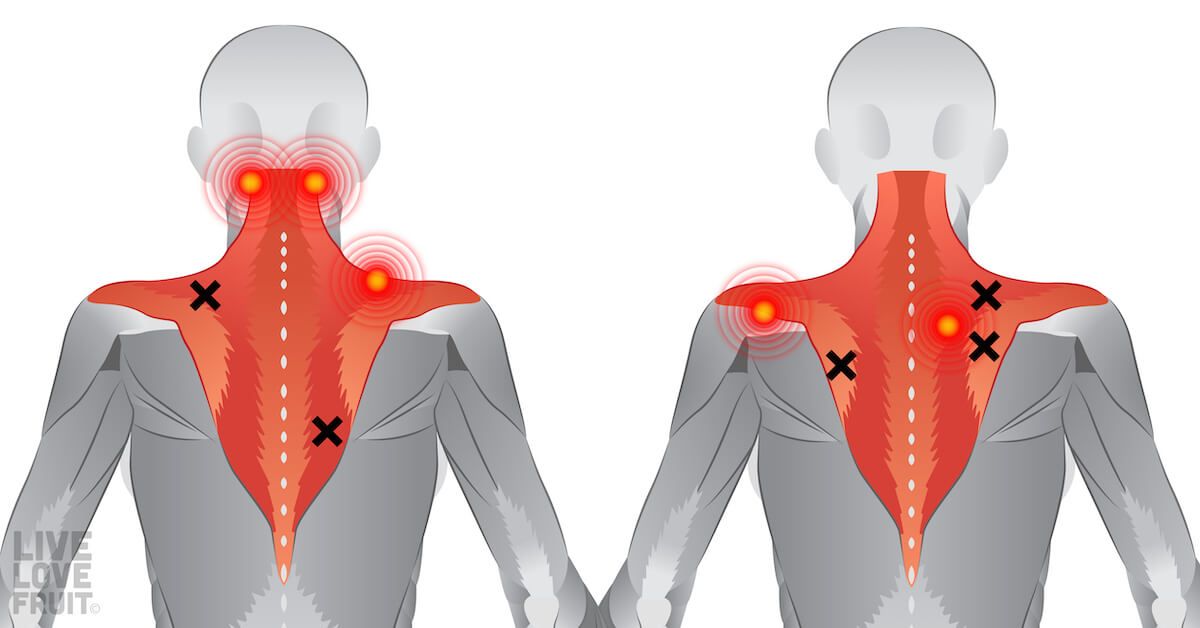
How can stiff and tight muscles result in back pain? – Stiff and tight muscles can be a major contributor to back pain, affecting millions of people worldwide. Understanding the connection between muscle tension and back pain is crucial for effective pain management and prevention.
For those wishing to express their love and gratitude in a different language, Vietnamese offers a beautiful and meaningful way to say “Happy Mother’s Day.” The phrase “Chúc mừng Ngày của Mẹ” conveys warmth, respect, and appreciation for all the love and sacrifices that mothers make.
Whether spoken or written, these words can bring joy and a sense of connection to Vietnamese-speaking mothers on this special day.
This article delves into the mechanisms by which stiff and tight muscles can lead to back pain, explores common causes, and provides practical strategies for alleviating and preventing this debilitating condition.
How Can Stiff and Tight Muscles Result in Back Pain?

Stiff and tight muscles can significantly contribute to back pain, affecting individuals of all ages and activity levels. Understanding the anatomical connection and physiological mechanisms involved can help us better manage and prevent this common issue.
Stiff and Tight Muscles in Relation to Back Pain, How can stiff and tight muscles result in back pain?
Muscles play a crucial role in supporting the spine and maintaining proper posture. When muscles become stiff or tight, they can exert excessive force on the surrounding structures, leading to pain and discomfort.
For those looking to target lower back fat, specific exercises can be incorporated into their fitness regimen. Exercises such as planks, squats, and bridges effectively engage the core muscles, helping to reduce back fat and improve overall posture. Combining these exercises with a balanced diet and regular cardiovascular activity can lead to significant results in reducing excess weight and improving body composition.
Specific muscles that, when tight or stiff, can contribute to back pain include:
- Erector spinae: These muscles run along the spine and are responsible for extending the back.
- Multifidus: Located deep within the spine, these muscles help stabilize and rotate the vertebrae.
- Psoas: These muscles connect the spine to the pelvis and can cause lower back pain when tight.
- Hamstrings: Located in the back of the thighs, tight hamstrings can pull on the pelvis and contribute to lower back pain.
Mechanisms of Back Pain Caused by Stiff and Tight Muscles
Stiff and tight muscles can cause back pain through several physiological mechanisms:
- Muscle tension:Tight muscles can compress nerves, leading to pain and numbness.
- Reduced blood flow:Stiff muscles can restrict blood flow to the affected area, depriving tissues of oxygen and nutrients.
- Muscle imbalances:When certain muscles become tight, they can weaken opposing muscles, creating imbalances that put stress on the spine.
Common Causes of Stiff and Tight Muscles Contributing to Back Pain
Various factors can contribute to stiff and tight muscles, including:
- Poor posture:Slouching or sitting in awkward positions for prolonged periods can strain muscles.
- Overuse or repetitive movements:Engaging in activities that repeatedly use the same muscle groups can lead to tightness.
- Injury:Sprains or strains can cause muscles to become stiff and painful.
- Aging:As we age, muscles naturally lose flexibility and become more prone to stiffness.
- Certain medical conditions:Some conditions, such as arthritis, can contribute to muscle stiffness.
Impact of Muscle Stiffness and Tightness on Back Pain Intensity and Duration
The degree of muscle stiffness and tightness can significantly influence the severity and duration of back pain:
- Mild stiffness:May cause occasional discomfort that resolves with rest or simple stretches.
- Moderate stiffness:Can lead to persistent pain and limit daily activities.
- Severe stiffness:May cause chronic pain, muscle spasms, and reduced range of motion.
Role of Muscle Relaxation Techniques in Alleviating Back Pain
Effective muscle relaxation techniques can help alleviate back pain caused by stiff and tight muscles:
- Stretching:Regular stretching can improve muscle flexibility and reduce stiffness.
- Massage:Massage can help loosen tight muscles and promote relaxation.
- Heat therapy:Applying heat to stiff muscles can increase blood flow and reduce pain.
- Cold therapy:Applying cold to sore muscles can reduce inflammation and numb pain.
- Foam rolling:Using a foam roller to apply pressure to tight muscles can help release tension.
Prevention and Management Strategies for Stiff and Tight Muscles to Reduce Back Pain
Preventing and managing stiff and tight muscles can help reduce back pain:
- Maintain good posture:Be mindful of your posture when sitting, standing, and sleeping.
- Warm up before exercise:Stretching before physical activity can help prevent muscle tightness.
- Stretch regularly:Incorporate stretching into your daily routine to maintain muscle flexibility.
- Avoid prolonged inactivity:Move around regularly to prevent muscles from stiffening.
- Strengthen core muscles:Strong core muscles help support the spine and reduce back pain.
Last Word

Managing stiff and tight muscles is essential for maintaining a pain-free and healthy back. By incorporating muscle relaxation techniques, adopting preventive measures, and seeking professional help when necessary, individuals can effectively address the root causes of back pain and improve their overall well-being.
For those looking to improve their overall fitness, exercises that target lower back fat can be a great option. Regular exercise is also crucial for maintaining flexibility, as it helps to improve range of motion and reduce the risk of injuries.
On a lighter note, Happy Mother’s Day to all the wonderful moms out there! Whether you’re celebrating with a pregnant woman or not, it’s always a special occasion . For those who want to express their love in a different language, here’s a heartfelt message in Vietnamese : Chúc mừng Ngày của Mẹ!
Commonly Asked Questions
What are some common causes of stiff and tight muscles that can lead to back pain?
When it comes to acknowledging motherhood, it’s important to be inclusive and respectful. While the term “Happy Mother’s Day” is commonly used, it may not be appropriate in all situations. Pregnant women , for instance, may not yet identify as mothers.
In such cases, a more sensitive and inclusive greeting, such as “Happy Mother’s Day to all who nurture,” can be a thoughtful choice.
Poor posture, prolonged sitting, lack of exercise, muscle strain, and dehydration are common causes of muscle stiffness and tightness that can contribute to back pain.
As we approach Mother’s Day, let us not forget to express our gratitude and love for the special women in our lives. From heartwarming images to thoughtful messages, there are countless ways to celebrate and honor our mothers. Whether it’s a simple phone call or a grand gesture, let us take this opportunity to show our appreciation for their unwavering love, sacrifices, and contributions to our lives.
How can muscle relaxation techniques help alleviate back pain caused by stiff and tight muscles?
Muscle relaxation techniques such as stretching, massage, and heat therapy can help reduce muscle tension, improve blood flow, and alleviate pain.
What are some preventive measures to avoid muscle stiffness and tightness that can lead to back pain?
Maintaining a healthy lifestyle is essential for overall well-being, including preventing flexibility issues. Regular exercise promotes flexibility by improving joint range of motion, muscle strength, and coordination. By incorporating regular physical activity into our routines, we can effectively reduce the risk of stiffness and pain, enhancing our mobility and quality of life.
Regular exercise, maintaining good posture, and staying hydrated can help prevent muscle stiffness and tightness, reducing the risk of developing back pain.







